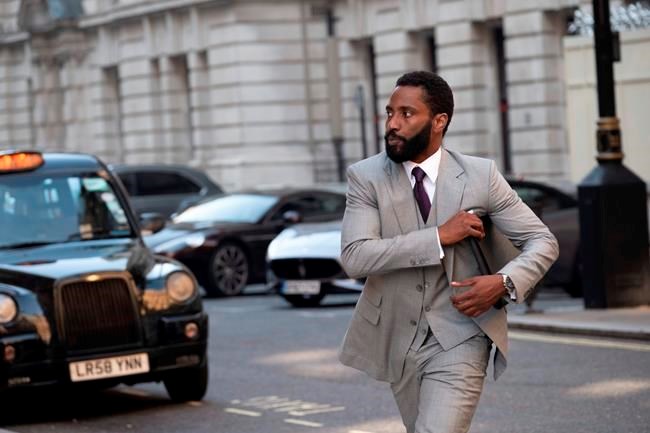Christopher Nolan movies almost demand another look and “ Tenet ” is no exception. On Tuesday, audiences will finally be able to watch, re-watch and dissect the palindromic spy thriller starring John David Washington and Elizabeth Debickifrom the comfort of their home.
“Tenet” will be available on 4K, DVD, Blu-ray and digital with behind the scenes extras that give a peek into the mind-bogglingly complex process of shooting a large-scale action film backwards and forwards.
Nolan spoke to The Associated Press about the release this week, days after the announcement that all Warner Bros. films in 2021 would be available on HBO Max on their day of release. “It’s not right. And it’s not a good business decision,” Nolan told the AP. “It’s all a bit of a mess.”
Nolan said he remains proud of “Tenet” and the complex work done not only to shoot it, but roll it out in
Remarks have been edited for clarity and brevity.
AP: It’s interesting to learn how the backwards and forwards action in “Tenet” is not just one gimmick or trick.
NOLAN: It’s a lot of different techniques. A lot of different thought went into it from a very large team of people. The audience’s eye for trickery is ruthless. If you want to try and stay ahead of the audience, you’ve got to have a lot of tricks up your sleeve and you’ve got to deploy them with blinding frequency.
AP: Your first assistant director said the first week on set was like being in pre-school. Did it feel like that to you?
NOLAN: Totally. The first week we scheduled the vault fight with John David Washington, which is filmed in four different ways. It’s about techniques but it’s also about scheduling. Nobody on that set, myself included, had any grounding in any previous film that would help us intuit what was going on. And so we had to learn it from the ground up so that when we got to, for example, Tallinn in Estonia and shut down their busiest freeway for three weeks, we knew how to do it. The film just kept getting bigger and bigger and bigger, but the complexity was there from the beginning.
AP: How did you know that a scene in reverse was working?
NOLAN: Hoyte Van Hoytema, the director of photography, had a company produce a monitor for us that we could strap on the side of the camera where at the end of a reverse take, we could immediately hit a button and watch the tape backwards. And that was a life saver. You really did need to see the stuff.
AP: This was your first time working with editor Jennifer Lame ("Hereditary," “Marriage Story”). What made you decide on her?
NOLAN: When I realized that Lee Smith wasn’t going to be available, it made me really think about when I started with Lee. He was the big movie guy and I was the small movie guy. And by the time we’d finished working on all the movies we’ve worked on we were both very firmly big movie guys. And so the big movie guy thing was taken care of. What I was looking for was somebody who would bring a different point of view. I got very excited about working with someone like Jen who hasn’t done these things before. It’s new and it’s fresh to her. She has tremendous skill and also great confidence. It’s a very daunting project. I warned her that the final action set piece, in my opinion, it’s one of the hardest things to cut that any editor has ever been faced with. She just did this extraordinary job with it.
AP: This release was unlike any in the history of film. How are you feeling about it now? And would you have done anything differently?
NOLAN: I’m really, really proud that my team was able to finish the film under very difficult circumstances so that we were ready for exhibition wherever they were able to safely open in the world. And we had great audiences all over the world — $300 million of people coming to see the film in other countries. Obviously in the United States we weren’t able to release the film properly. But at the end of the day, the only thing I regret is that I wasn’t able to go to these other places in the world as I normally would sit with audiences back of the
AP: A lot of people are going to be watching “Tenet” for the first time at home. What’s your ideal set-up?
NOLAN: For me, the ideal is the 4K UHD disc on a sizable 4K UHD/HDR capable television. Obviously, that’s a tall order in terms of hardware, but the DVD, the Blu-ray are fantastic ways to watch it and the 4K streaming is going to be spectacular. A lot of people put a lot of time and effort into finishing this off just right. 4K UHD is my
AP: Do you think it’ll ever play in IMAX in Los Angeles (where indoor
NOLAN: I’m very hopeful that it will, I’ve talked to the IMAX guys about it. I’m just really excited that people will be able to see the movie now, particularly in America, where they haven’t really had much of a chance.
—-
Follow AP Film Writer Lindsey Bahr on Twitter: www.twitter.com/ldbahr
Lindsey Bahr, The Associated Press



